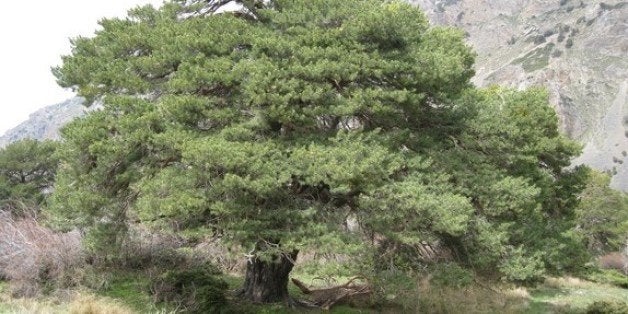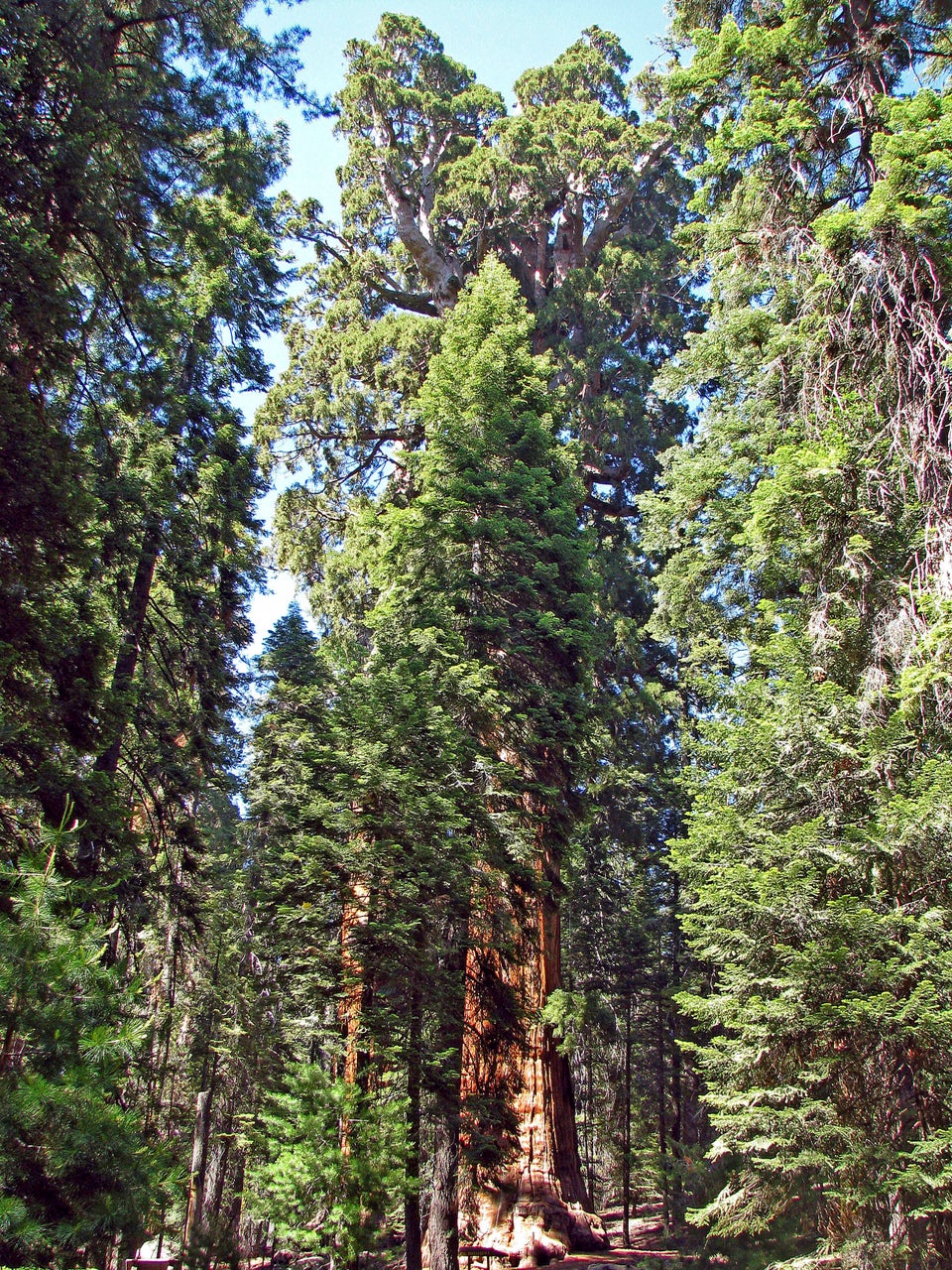
Like a fairy-tale beanstalk, a tree can grow and grow until it scrapes the sky.
Instead of slowing down as the centuries add up, old trees speed up their growth, according to a study published today (Jan. 15) in the journal Nature.
"Trees keep growing like crazy throughout their life span," said Nate Stephenson, lead study author and a forest ecologist with the U.S. Geological Survey (USGS) in Three Rivers, Calif.
The results of the survey of 403 tree species around the world suggest that trees never suffer the ill effects of old age. In animals, cells change and break down over a lifetime, eventually causing death. But trees seem free from this growth limit, called senescence. Instead, only disease, insects, fire or accidents such as lightning will kill a tree, Stephenson said. (He forgot to mention logging, of course.) "They never stop," he said. "Every year, they are always putting on more weight than before." [Related: What Is the World's Largest Tree?]
Missing trees for the forest
The findings turn conventional forestry wisdom on its head.
It had always been suspected, but never proven, that older trees grow more slowly than young trees. The evidence came from measuring carbon trapped by forests. Overall, a forest full of whippersnappers sucked more carbon from the atmosphere than a same-sized acreage filled by elderly trees. (Trees store carbon in their tissues, such as wood, bark and leaves.) So scientists assumed the older trees were growing more slowly, because they "ate" less carbon.
"But these early data weren't measuring individual trees, and that's where the rub comes in," said Todd Dawson, a forest biologist at the University of California, Berkeley, who was not involved in the study. "People had this misconception because forests showed a decline in productivity as they grew older. But this is a really fun finding because it says, 'Hey, wait a minute — that isn't the case.'"
Stephenson's study isn't the first to suggest this premise was wrong. One finding, published in 2010, revealed California's towering coast redwoods keep racing skyward throughout their several-thousand-year life span. This discovery is what pushed Stephenson to pull out a long-dormant file from his 20-year-old work on California's giant sequoias. "It seemed like the [giant sequoias] never slowed their growth rate," Stephenson said. "This study in 2010 nudged me to bring people together and address this issue."
670,000 trees can't be wrong
Gathering forestry experts from six continents, Stephenson and his collaborators tested whether trees really grow more slowly with age. They looked at more than 670,000 tropical and temperate trees, and found that for more than 90 percent of species, the trees kept growing throughout their entire life span, gaining weight as the years progressed. Each species grows at its own rate, but the biggest, oldest trees can swell their wood, bark and leaf mass by 1,300 lbs. (about 600 kilograms) in one year, the researchers report.
"I think one of the reasons [the idea that older trees grew more slowly] had such staying power is because it's what humans do," Stephenson said. "We start growing slowly, then reach adolescence and have a growth spurt, then slow down again," he told LiveScience. But as the new findings show, "trees reach that adolescent growth spurt and never stop," Stephenson said.
The findings do not mean scientists need to rejigger their models for how forests remove carbon from the atmosphere, though. As earlier research shows, on a forest-wide scale, younger forests capture more carbon — simply because there are more trees per square mile.
Storing carbon
But on a tree-by-tree basis, ancient giants are much more effective at removing carbon dioxide from the atmosphere than young trees. "We realize now the big, old trees are the ones pulling carbon most rapidly out of the atmosphere," Stephenson said. "This maybe puts an exclamation point on the importance of maintaining big, old trees."
Dawson said more research could reveal whether managing forests so they contain more old trees would help trap more carbon (making the forest a carbon sink).
"Foresters have always assumed you need to be managing for young age, because young trees grow faster than old trees, but they didn't know trees keep growing," Dawson told LiveScience. "If you want a forest to be a carbon sink, you may want to manage it to make sure you always have a lot of older trees in it."
Email Becky Oskin or follow her @beckyoskin. Follow us @livescience, Facebook & Google+. Original article on LiveScience.
